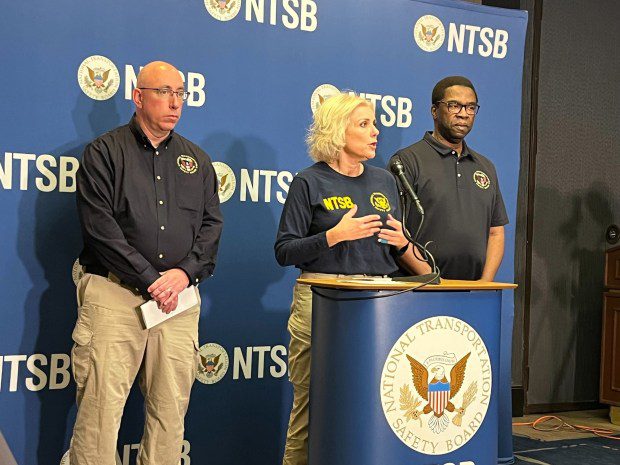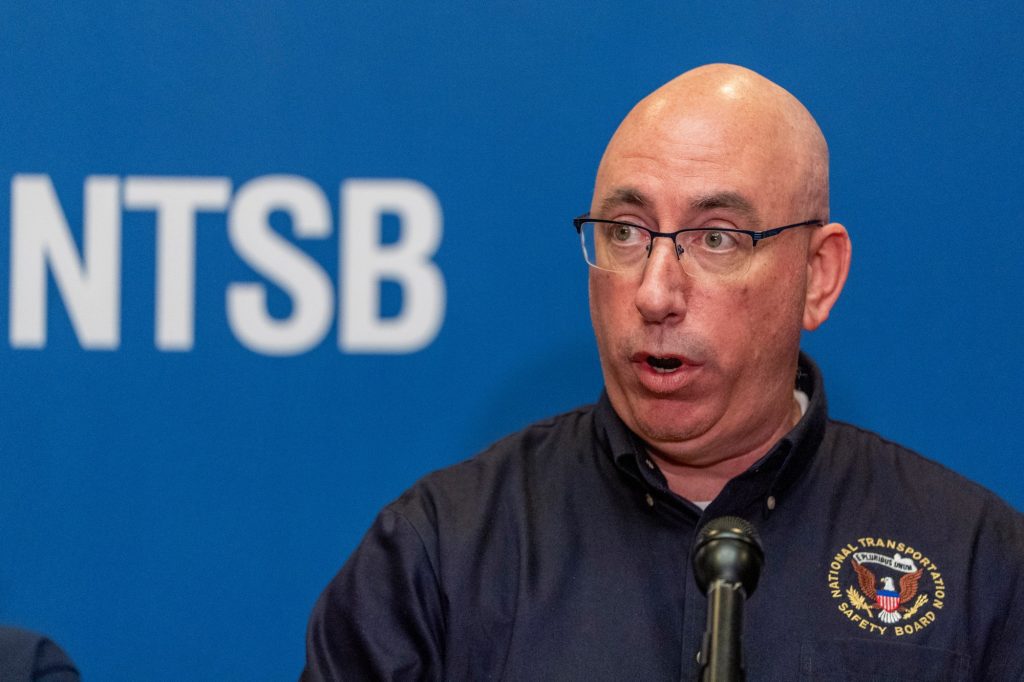The person federal authorities chose to lead an investigation into a huge cargo ship's crash into Baltimore's Francis Scott Key Bridge and the immediate, deadly collapse of the bridge is an experienced sailor with roots in time spent on oil rigs. Francis Scott Key Bridge and the bridge's immediate, deadly collapse is an experienced mariner who traces his seafaring roots to time spent aboard oil rigs.
Marcel Muise started working for the National Transportation Safety Board as a marine accident investigator in 2018 after over 20 years in the maritime industry. He served in various capacities for the Coast Guard and on private vessels, advancing from mate to captain.
John Konrad, who worked with Muise for ten years in the maritime business before starting gCaptain.com, called Muise a “bona fide captain,” stating that he sailed under the highest license administered by the Coast Guard and gained enough expertise to oversee the construction of oil rigs in South Korea.
“He walks the deck. He understands the engine systems — not just the technical stuff, but how you run them,” Konrad told The Baltimore Sun.
Between 2018 and 2021, Muise played a leading role in the investigations into at least three deadly accidents, according to an NTSB spokesman. The agency appointed Muise investigator in charge of its ongoing probe into the Titan submersible, which imploded last summer — killing the five people inside — in the Atlantic Ocean on an expedition to the deep ocean wreck of the Titanic.
Former marine investigators described his experience as invaluable for confronting the biggest job of his career: Figuring out why a container ship crashed March 26 into one of the Key Bridge’s critical supports, causing the bridge to collapse and killing six members of a construction crew who were filling potholes, and ultimately crafting safety recommendations to prevent a similar tragedy.
In addition to the death toll, the crash indefinitely interrupted vessel traffic in and out of the Port of Baltimore, a key economic and transit hub whose impact reaches far beyond Maryland. The 984-foot, 112,000-ton Dali still sits aground amongst the mangled steel and concrete that once transported more than 30,000 vehicles a day over the port’s main and only channel into the Chesapeake Bay.
“This one has a level of interest that is not usual,” Barry Strauch, who served as an NTSB investigator for more than three decades, told The Sun.
In any safety board probe, the lead investigator is responsible for setting the pace of the investigation and coordinating groups of experts assembled to look into certain elements of the accident, according to Strauch and Thomas Roth-Roffy, who investigated marine accidents for the NTSB for 18 years.
The NTSB declined to make Muise available for an interview. But on his LinkedIn page, Muise describes himself as a capable leader, nodding to his experience commanding oil rigs.
“As Master of a modern drillship, I supervised a crew of 120 with responsibility for up to 90 more people onboard,” his page says. “This includes everything from overseeing hotel services, resolving HR issues and emergency management to implementing a thorough safety management system and preventive maintenance for a $700 million asset.”
During a news conference last Wednesday, NTSB chair Jennifer Homendy mentioned that investigative groups for nautical operations, engineering, recorders, and survival factors were set up for the Key Bridge case.
Homendy stated that investigators in those groups started interviewing crew members, gathering and processing data from the Dali's voyage data recorder, and requesting numerous documents related to the ship's maintenance and inspection history.
Before fielding questions last Wednesday, Homendy yielded to Muise to present the timeline of the crash. Muise outlined the timeline of the crash. In front of a dozen television cameras and twice as many reporters, the crash timeline was presented.
The Dali departed the port with the help of two tugboats around 12:50 a.m. Troubles emerged about 30 minutes later while the ship was in the channel. A mayday call was made when the harbor pilot reported losing all power and steering. Despite steering commands, the crew couldn't prevent the ship from drifting at speed and crashing into the Key Bridge at around 1:29 a.m.
Muise informed reporters that further analysis of the voyage data recorder audio and comparison with other time sources will be necessary to determine the exact time of contact with the bridge. He noted that the NTSB will gather technical experts to review the entire VDR recording and produce a detailed transcript of the dialogue.
The NTSB's investigation will look into the failures aboard the Dali that resulted in reported power outages before it struck a bridge pier, as well as the instantaneous collapse of the bridge.

Typically, these investigations take one to two years and conclude with a comprehensive report outlining the accident causes and making safety recommendations for the future. The agency usually releases a preliminary report about a month after the incident.
While the investigation is complex, Strauch highlighted several factors that should aid NTSB investigators and are not always readily available to them.
Strauch mentioned that the ship and its predominantly Indian crew, who remain on the vessel, are easily accessible sources of data, unlike in some other investigations.
He also mentioned the existence of a video of the crash.
Strauch added that the videos will help determine the forces on the bridge that led to the collapse, providing crucial evidence.
Before handling the Key Bridge case, Muise led NTSB groups investigating the capsizing of a lift boat in 2021 off the coast of Louisiana, a fire aboard a dive boat off the coast of California in 2019, and the 2018 sinking of an amphibious passenger vessel in a Missouri lake, according to an agency spokesperson.
Years before he became an investigator, Muise rose through the ranks at Transocean, an American drilling company, according to Konrad, who worked with him there.
He served as chief mate of the offshore drilling vessel Deepwater Horizon and was later promoted to captain. Muise left the vessel a few months before it exploded in 2010, causing the death of 11 crew members, as stated by Konrad, co-author of the book “Fire on the Horizon: The Untold Story of the Gulf Oil Disaster.”
Konrad mentioned, “I believe that’s what motivated him to join the NTSB, to prevent future incidents like that, because I know it had a deep impact on him.”









